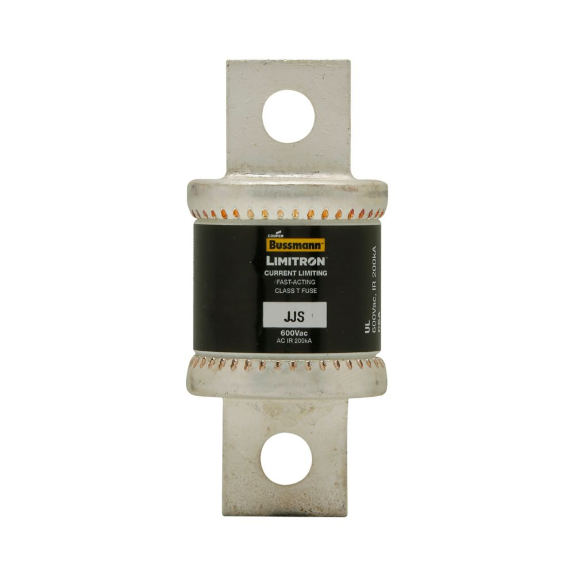Bussmann JJS-45 fuse is a vital electrical component commonly employed in industrial and commercial settings. Its primary function is to protect circuits and equipment from overcurrent situations, thus preventing damage caused by excessive electrical currents. These fuses find application in various systems, such as motor control centres, distribution panels and machinery control.
Working Mechanism:
- Bussmann JJS-45 fuse is designed to protect electrical circuits from overloads and short circuits. It works by using a metal element inside its cylindrical body. When the current flowing through the fuse exceeds its rated capacity, the metal element quickly heats up and melts. This melting breaks the circuit, interrupting the flow of electricity and preventing damage to connected devices or wiring. The fuse's fast-acting nature ensures a rapid response to overcurrent situations, effectively safeguarding the circuit.
Features:
- Bussmann JJS-45 fuse has a cylindrical body, which aids in easy installation and replacement.
- It has an interrupt rating of 200kA at 600VAC to safely interrupt high fault currents.
- This JJS-45 fuse features melamine construction for durability and resistance against environmental factors.
- It has a single element to provide focused and efficient protection against overcurrents.
- This fuse has amperage and voltage ratings of 45A and 600VAC.
Compatible Accessories:
- Bussmann T60060-3CR Fuse Block: It provides a secure and organised way to install and replace the fuse while ensuring reliable circuit protection.
Frequently Asked Questions:
Q. What is the difference between fast-acting and time-delay fuse?
A. Fast-acting fuse reacts quickly to overcurrent conditions, while time-delay fuse has a slight delay before reacting.
Q. What is the difference between interrupting rating and the ampere rating?
A.
- The interrupting rating of a fuse refers to the highest amount of energy the device can effectively handle and safely interrupt during a fault condition. This capability prevents excessive energy release and potential hazards.
- On the other hand, the ampere rating of a fuse indicates the threshold of current that the fuse can accommodate before it activates. This rating defines the maximum current level that can flow through the fuse without triggering its protective function.
 Change Country
Change Country

 In Stock : 94 Units
In Stock : 94 Units

